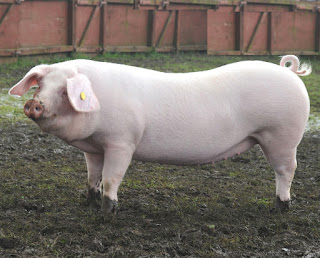
How to Properly Care for Fish
How to Properly Care for Fish
Fish don't need as much attention as a cat or dog, but they aren't as hands-off as people might assume. Proper fish care requires careful planning and thorough preparation. Initially, first-time fish owners will need to set up a suitable tank for their new pets. Healthy aquarium habitats are tailored to the type of fish that will live there. Buyers will want to explore their options to determine which species of fish they'd like to own. This research will help them build their aquarium and choose the right kind of food.
READ ALSO: Fish Farming Plan
After fish are introduced to a tank, water chemistry and other conditions need to be monitored to ensure a stable aquatic environment. It's also important to stick to consistent feeding and cleaning schedules. This guide explains the key elements of proper fish care and aquarium maintenance. Following this advice will help keep pet fish happy and healthy. Live fish, aquariums, and tank maintenance equipment are available at pet stores, aquatic hobby shops, and discount department superstores.
READ ALSO: How Do Fish Breathe Underwater
How to set up a Healthy Aquarium
Setting up an aquarium with hospitable conditions is the first step in proper fish care. It's recommended that beginners start out with a 20 to 30 gallon fish tank. A tank of this size will allow for healthy water conditions and leaves plenty of room to increase population. The type of fish will generally determine tank conditions. Buyers will need to choose between freshwater, brackish, and marine species and then set up their tank up accordingly. The tank should be placed in a sturdy location that is not subject to frequent temperature changes. For this reason, direct sunlight and heating vents should be avoided.READ ALSO: Guppies And How They Give Birth
Basic Aquarium Equipment
To ensure the well-being of pet fish, aquariums should contain all the following items. If the tank will house tropical fish, a heater may also be necessary. Be sure to check species' temperature needs.Lighting
Since fish won't have access to much natural
light, an aquarium
light is recommended. A tank cover that includes a light also reduces
evaporation and keeps out foreign matter. Additionally, an aquarium
hood prevents the fish from jumping out. A fluorescent bulb provides
full-spectrum lighting and will show off vibrant fish coloration. A timer can
be set to keep the light on for the prescribed twelve hours per day. Proper
lighting is especially important for reef tanks and other aquariums with live
plants.
READ ALSO: Most Dangerous Birds in the World
READ ALSO: Most Dangerous Birds in the World
Filtration
Aquarium
filters are designed to maintain water quality by removing contaminants
like waste and debris. They should be cleaned once a month as part of a regular
tank maintenance schedule. Always check the manufacturer's specifications to
determine if a filter is compatible with the size of the fish tank. Buyers can
choose from a number of different filter types, depending on their needs:
·
External/Internal Power Filter
·
Canister Filter
·
Corner Filter
·
Under gravel
Filter
·
Sponge Filter
·
Diatom Filter
·
Fluidized Bed
Filter
·
Wet/Dry Filter
Decorative Features
Aquarium
decor helps fish feel more at home. Gravel
is generally used to cover the bottom of the tank. Live plants improve water
quality and reduce algae growth. Fish appreciate places to hide out, such as
decorative castles or overturned flower pots. Driftwood, rocks, and shells are
also commonly used to create a visually attractive aquarium that fish will
enjoy. Always research the natural habitat of the species that will live in the
tank. This will ensure that the decor matches the specific needs of the fish.
READ ALSO: What To Know About Pig Farming
READ ALSO: What To Know About Pig Farming
Introducing Fish to a New Tank
It's best to add all the necessary equipment and run the aquarium for at least a week before introducing the first one or two fish. Afterwards, the population can be increased by a few fish per week. To avoid overcrowding, don't exceed the recommended total capacity for the tank. The floating bag method is the most popular way to acclimate fish to a new tank. The bag used to transport the fish is placed either directly into the tank or in a separate bucket.Water from the tank is then added to the bag periodically over the course of an hour. This approach gives the fish time to adapt to the temperature and chemistry of the tank water. An alternative technique called the drip method is used to a climate certain delicate species of fish. This method involves a more gradual introduction of tank water to the bag using rubber tubing. Once a climated using one of these methods, the fish can be netted and placed in the tank.
READ ALSO: The Secret About Snakes
Dietary Guidelines for Fish
Fish are happiest with a well-balanced, yet diverse menu. A varied diet
allows fish to receive the proper nutrition required for good health. Owners
will need to be aware of the dietary requirements of each species living in
their tank. Fish
food flakes are a good start, but they should be supplemented with
additional offerings. Rotate different varieties of pellet, freeze-dried, and
live foods, along with nutritional and vitamin supplements. Suggested fish
treats include brine
shrimp and bloodworms..Avoid Overfeeding the Fish
Overfeeding leads to dirty tanks and unhealthy fish. The best approach is to feed fish three small meals a day. Keep an eye on how much the fish eat during each feeding. They should be able to eat everything before it reaches the bottom. If not, uneaten food may lower water quality and increase algae growth.READ ALSO: Ten Most Dangerous Snakes in the World
Proper Aquarium Care and Maintenance
A consistent aquarium maintenance schedule is a must for ensuring the health
of pet fish. To prevent dangerous fluctuations, close attention must be paid to
water conditions, and fresh water should be added frequently. Additionally,
owners will need to learn how to detect sickness in their fish tank.Check Water Conditions Often
READ ALSO: Sorts of Pests Commonly Found in Establishment in the Hospitality Industry
Fish are sensitive to various aquatic conditions, such as temperature and water quality. Use an aquarium thermometer to monitor water temperature, which should remain fairly constant at all times. It's also important to keep the water quality in check. Aquarium test kits allow owners to measure ammonia, nitrates, phosphates, and pH level. Filter adjustments and chemical buffers or neutralizers may be necessary if tests prove water chemistry to be less than ideal.Change Tank Water Weekly
To ensure proper aquarium water quality, remove several gallons of tank water each week and replace it with fresh water. This will reduce built-up chemicals and other contaminants that can't be filtered out. Before doing so, remember to clean any algae off the walls of the tank. Tap water is fine to use as a replacement, as long as it's been "aged." This means the water was left to sit uncovered for at least 24 hours. Aquarium water conditioner is also available to remove harmful chemicals from tap water.READ ALSO: The Truth About Desert Tortoise
Learn to Recognize Signs of Illness
By paying close attention to general wellness and behavior, fish owners can often tell when their fish are sick. There are three main causes of illness in fish: fungi, parasites, and bacteria. The following chart lists the symptoms of a number of common fish ailments to help owners make a diagnosis.Illness |
Symptoms |
| Cotton Wool Disease | Fluffy white fungal growths on fish scales, gills, and mouth |
| Fin Rot | Red fin streaks; abnormal lightening of fin edge; fraying and deterioration |
| Gill Rot | Mottled gills covered in mucus; difficulty breathing |
| Hole in the Head | Pitting and ulcerations primarily located on or near the head |
| Ich | White spots on body and gills; agitation, respiratory distress, lethargy |
| Tuberculosis | Emaciation, skin ulcers, pale coloration, general poor health |
| Velvet Disease | Gold or rust-colored film on skin; inflamed gills; labored breathing |
| Vibriosis | Loss of appetite; increased respiration; skin lesions and ulcers; lethargy |
READ ALSO: How broiler eating their kind/ Debeaking
To keep a disease from spreading, it's good practice to isolate sick fish in a quarantine tank. To prepare for potential illnesses, keep a wide range of fish medication and other treatment options on hand.







